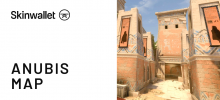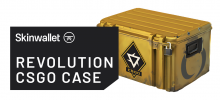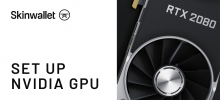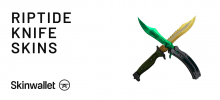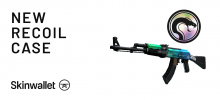Friendly Guide to Price Lookup on CS:GO Marketplaces

Developing the range of their services, Valve at one point supplemented Steam application with a whole module for trading digital goods in the form of game-related items, cosmetics and such. It has begun humble, mostly as a way for players to exchange these goods, yet in time grew to be a vital market that has created its own economy extending beyond the service.
Nowadays, Steam Marketplace operates for a plethora of games that are available in the Steam Store. Many of those utilize a sort of trading card game mechanics, were items are diversified in terms of rarity and thus the less common ones make valuable collectible finds if not just supplement the game with new content. The marketplace allows posting up, sell and buy offers that other users might accept. It also provides a direct trade that can be used to initiate an exchange of items with a specific user.
There are also various third-party websites that explore every possibility to expand the offer of a basic, built-in Steam Marketplace by offering a more friendly interface, extended trade options or additional, not strictly trade-related services, like skin upgrading. Both the original marketplace and it’s external operators allow users to look up prices on the CSGO marketplace and evaluate the worth of your loot. The prices may vary, though, so it’s beneficial to know your way around both of those and understand the general rules when performing such CSGO marketplace price lookup.
What is Steam Marketplace actually?
Steam Marketplace is a service built into the Steam application that allows for a regulated and relatively safe trade of collectible items found in game between its users. It can be either viewed as a catalog of items that includes easy access to buy offers related to such items or will allow you to post offers from the perspective of your inventory. We’ll examine this process in the context of trading CSGO skins.
When you buy, you hit the marketplace and search for the item that you’re interested in. You can type in the name of the item into the search bar or sort available offers by game, price, and others. When you find a specific offer, it’s enough to click the buy button. Steam will check if you have enough funds in the Steam Wallet and will ask you to charge it if you don’t. In case of CSGO skins, the item will be put into a trade hold, when it needs to stay bound to your account for 7 days. This was introduced because of the massive number of scams and extortions where items would be taken over and moved from account to account to be laundered.
When you sell, you need to go to your inventory, select an item you want to sell and click the sell button. After that, you need to look up prices CSGO marketplace offers has registered in the recent past, but fortunately, they’re conveniently displayed in a popup widget. Now you’ll decide on the price of your item considering the trading fee that always applies (it’s conveniently displayed in a matter of two values – what will the buyer pay and how much you will get after subtracting their commission) and confirm. Your sales offer will be posted to a global catalog, where it can be displayed by potential traders. Sometimes, if there are a lot of buy offers for a certain item in the price range you proposed, they might be sold to a waiting person instantly.
There is always a discussion of prices. Steam Marketplace is the motherlode of this economy and it is the Steam Marketplace CSGO price lookup that serves as a reference point. Selling prices are usually a bit lower than it would be possible and buying prices would often be less lucrative too. This stems from several factors. For one, the volume and the frequency of trades encourage lowering the prices. Secondly, trading specific rare and contextually worthy items moved out of Steam and its somewhat cloggy interface to third-party marketplaces, where it’s easier to display item properties like exact float or applied stickers. Aside from that, it depends on trends, security and a plethora of conditions.
How do you look up prices on Steam Marketplace
When going for a price lookup CSGO marketplace trade offers present, you can take on several strategies. The easiest one would be to proceed as usual when buying items, filter out what you want, inspect a given item and check the graph for the variety of prices it has reached. This might give you a general idea that’s relatable when you’re selling irrelevant items for a quick Steam Wallet credit.
However, you might also browse a little bit more thoroughly. Filtering the offers according to an item should present all sell offers that have been posted in connection to it. This will allow you to see exactly the offers with the highest and lowest prices. You can then also see exactly what influences these prices. In terms of CSGO skins, wear level is a big difference. Looking up offer by offer might give an idea of what wear level costs best for a certain item.
If it still sounds tedious, I’ve got good news for you. There are third-party websites that are willing to do this for you, for free. Probably the most famous external catalog of CSGO items, CSGO Stash will always display a previewed item’s median prices for both Steam and Bitskins for each level of wear. Some go even further, like Steam Analyst, where they will show the number of items sold for a certain price, even dividing that into types of skins in terms of skins like Gamma Doppler knives. Such convenience also applies to third-party marketplaces that squeeze every bit of information from Steam’s API.
A tad of ins-and-outs of item trading
Always bear in mind that once your fund enters the Steam Wallet, they cannot be paid out and can only be used to buy games in Steam Store or buy items from Steam Marketplace. This might be all right with cheaper items but can become a bugger when selling real rarities. This constitutes the advantage of third-party marketplaces, which offer their users payouts in the form of credit, cryptocurrencies, e-wallet payouts or straight-forward cashouts.
This should be a common sense, but always make sure to know what you’re buying and for how much before hitting that confirmation button. The certainty should consider not only the price range of other offers but the skin you’re buying. Even within the same wear level, the float difference might be drastic enough to influence the price.
When dealing outside Steam Marketplace – and I cannot stress this one enough – always follow that given site’s safety measures listed before the trade. Sites like SkinBaron use trading bots to automatize the trade and make sure your funds reach you the fastest way possible. Scammers and thieves might want to take advantage of that, especially if your account has been compromised even in the slightest. Make sure to protect your data and keep the devices you use safe with firewalls.
Summary
In this article I did my best to show you generalized possibilities of looking up prices of your CSGO items. Users of Steam’s CSGO marketplace lookup prices using the internal mechanics of the catalog, either by viewing the graph for a certain item variant’s latest prices or by analyzing all offers manually. They can also refer to third-party websites for a more data-based analysis, processed and presented in a readable way. Not forgetting to apply all safety measures, skin owners can support their choices with acquired informations on prices and perform more successful trades.






 (5 votes, average: 3.60 out of 5)
(5 votes, average: 3.60 out of 5)